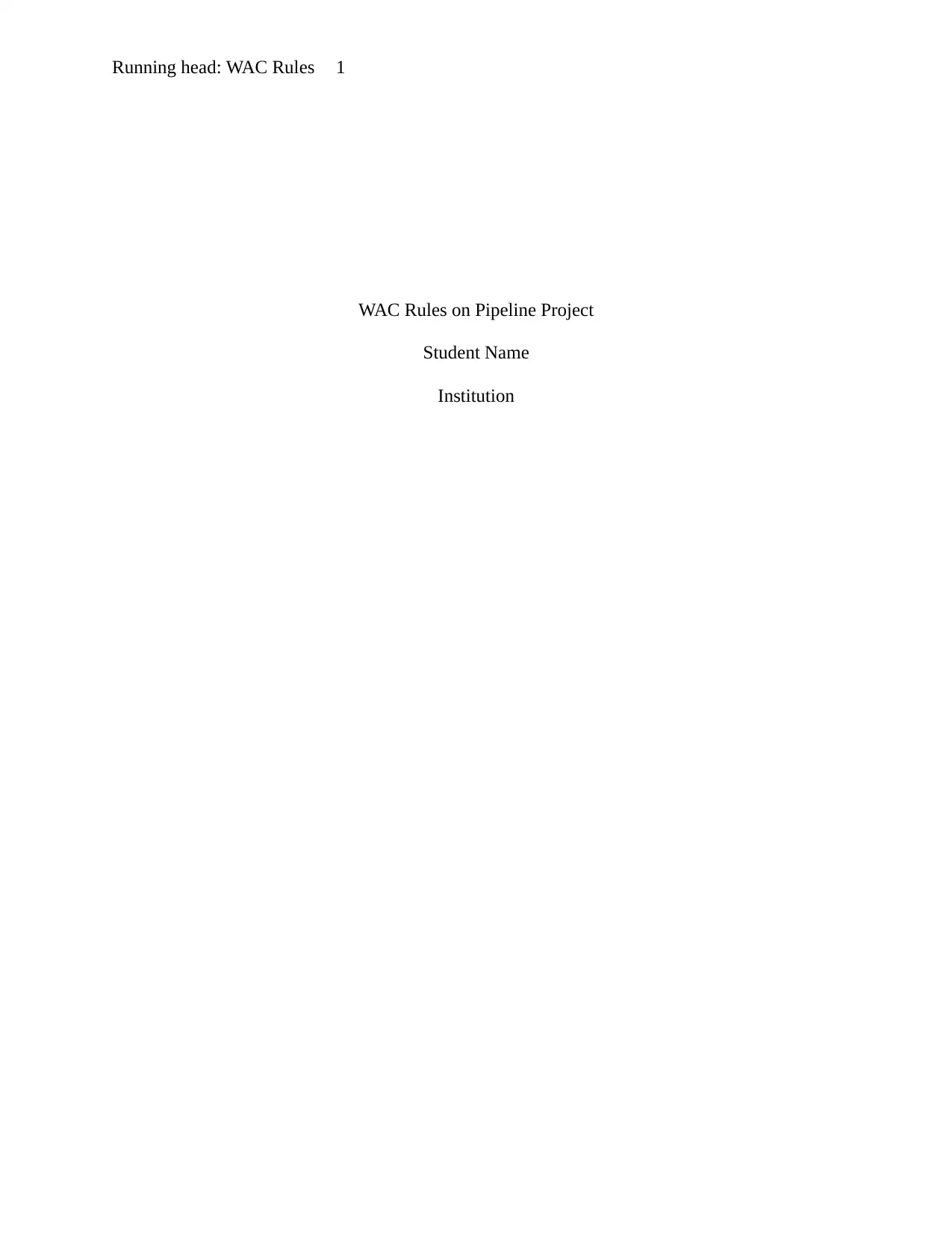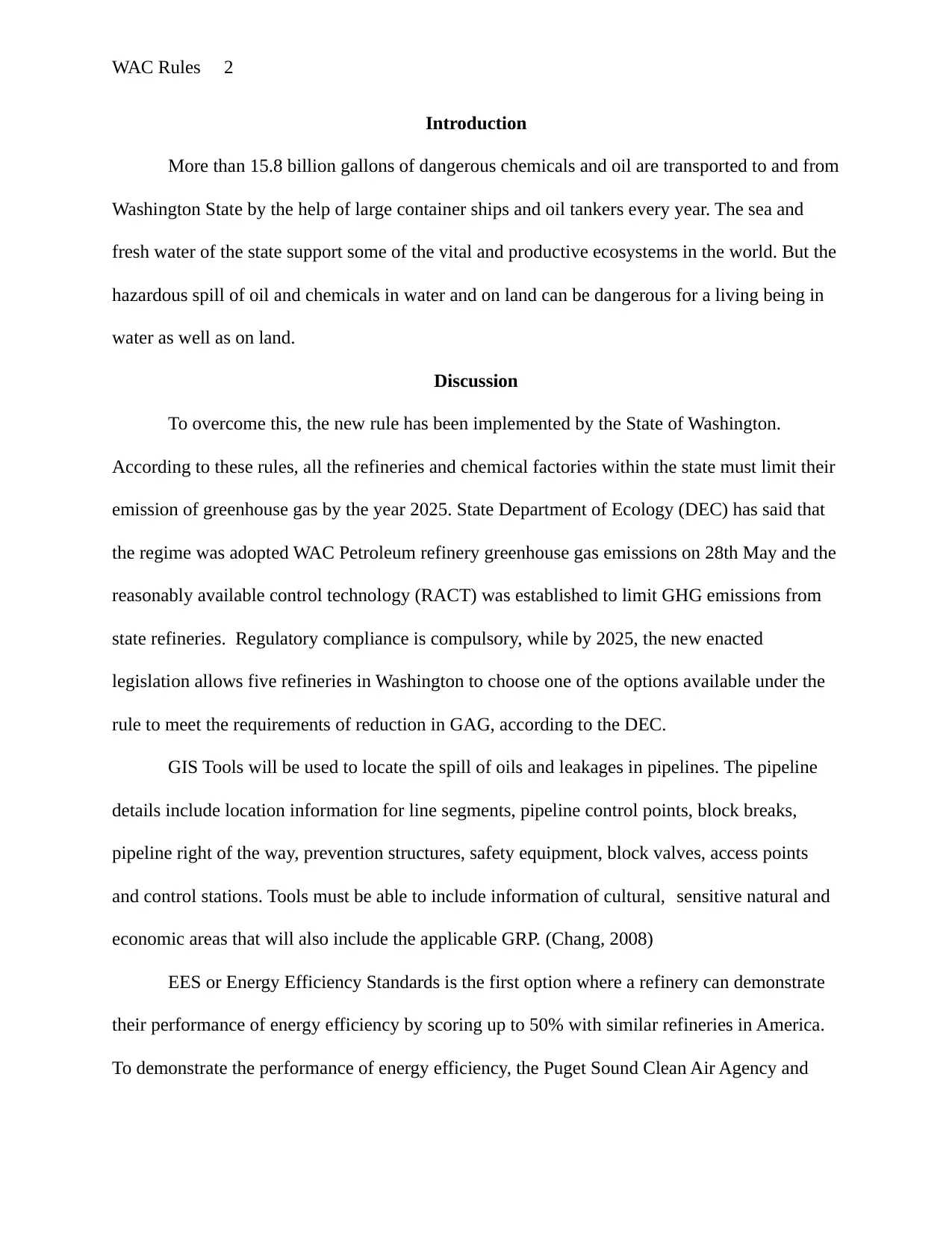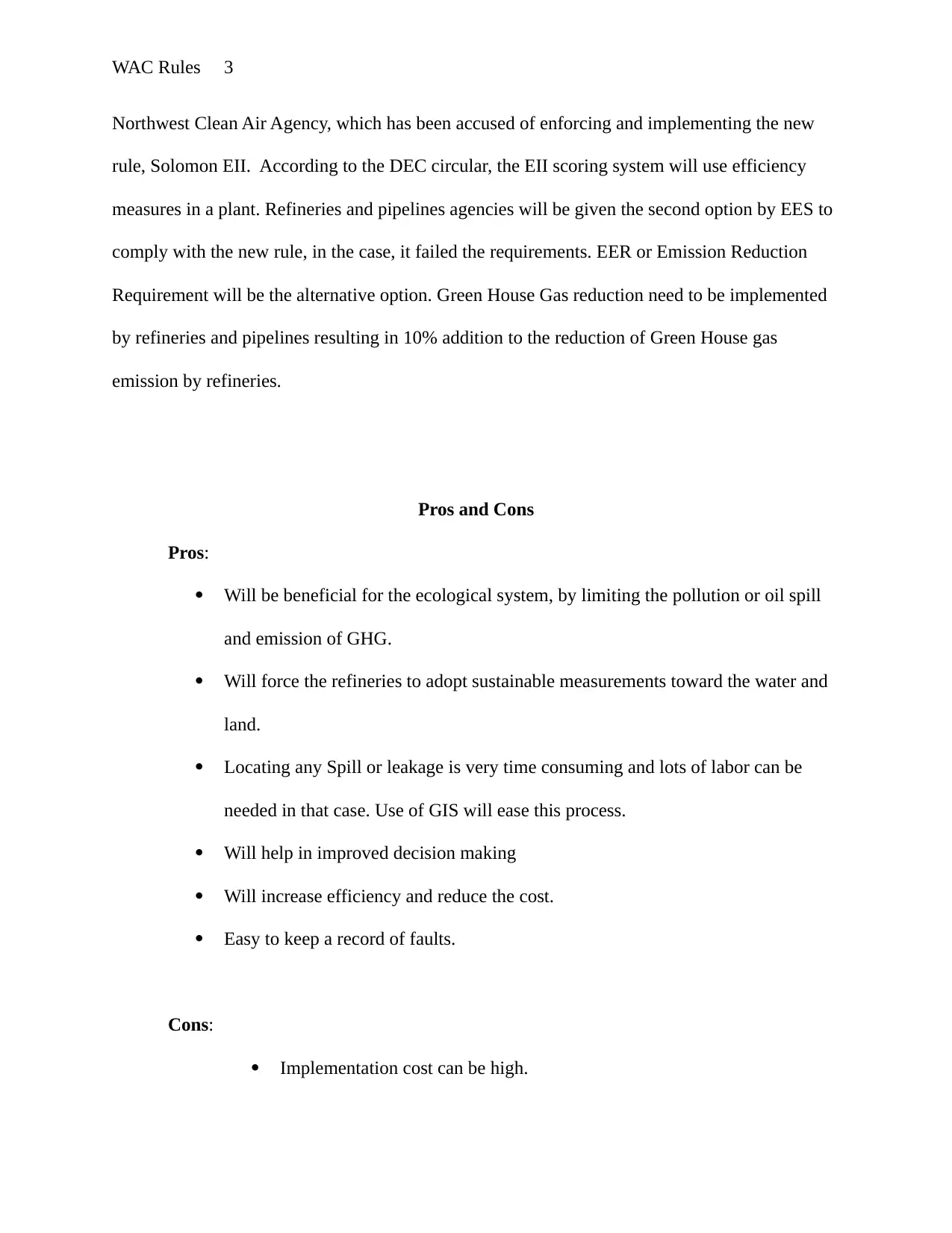Environmental Analysis: WAC Rules and Pipeline Project Implications
VerifiedAdded on 2019/09/20
|5
|579
|363
Report
AI Summary
This report analyzes the impact of Washington Administrative Code (WAC) rules on pipeline projects, focusing on environmental regulations and the reduction of greenhouse gas (GHG) emissions. The report highlights the use of Geographical Information Systems (GIS) tools for locating spills and leakages in pipelines. It examines the Energy Efficiency Standards (EES) and Emission Reduction Requirements (ERR) options available to refineries for compliance, as well as the pros and cons of these regulations. The report also discusses the potential benefits of these rules for the ecological system, including reduced pollution and sustainable measurements, while acknowledging the implementation costs and data privacy concerns associated with these regulations. The study underscores the importance of these regulations in promoting environmental sustainability in the context of pipeline operations.
1 out of 5







![[object Object]](/_next/static/media/star-bottom.7253800d.svg)